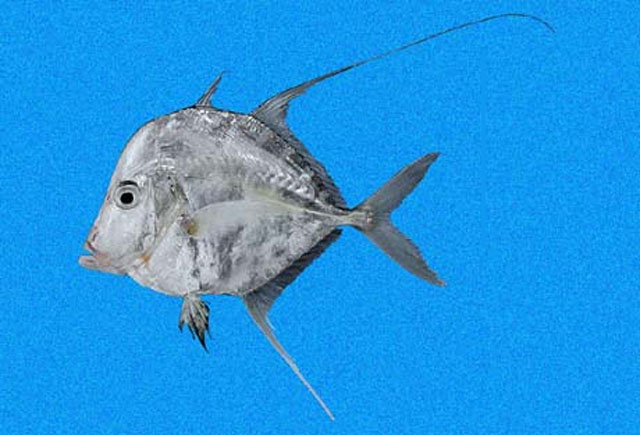| Carangidae (Jacks and pompanos), subfamily: Caranginae |
| 33 cm TL (male/unsexed) |
|
benthopelagic; marine |
| Eastern Pacific: Baja California, Mexico to Colombia. |
|
Body very deep, short and compressed; lower branch of first gill arch with 14 to 17 gill rakers; dorsal fin with 8 spines followed by another spine and 17 to 18 soft rays (VII1, 17-18); anterior lobes of second dorsal and anal fins elongated in adults; anterior dorsal spines greatly prolonged in juveniles; body scaleless; lateral line scutes very weak and poorly differentiated; body silvery with metallic blue green highlights; juveniles yellowish, with 4 or 5 interrupted, dark, transverse bars (Ref. 55763). |
| Adults are found in shallow coastal waters in small schools, generally near the bottom (Ref. 9283). They feed on squid, small crabs, small fishes and polychaetes (Ref. 9283). Marketed fresh and salted or dried (Ref. 9283). |
|
Least Concern (LC); Date assessed: 30 April 2008 Ref. (130435)
|
| harmless |
Source and more info: www.fishbase.org. For personal, classroom, and other internal use only. Not for publication.

